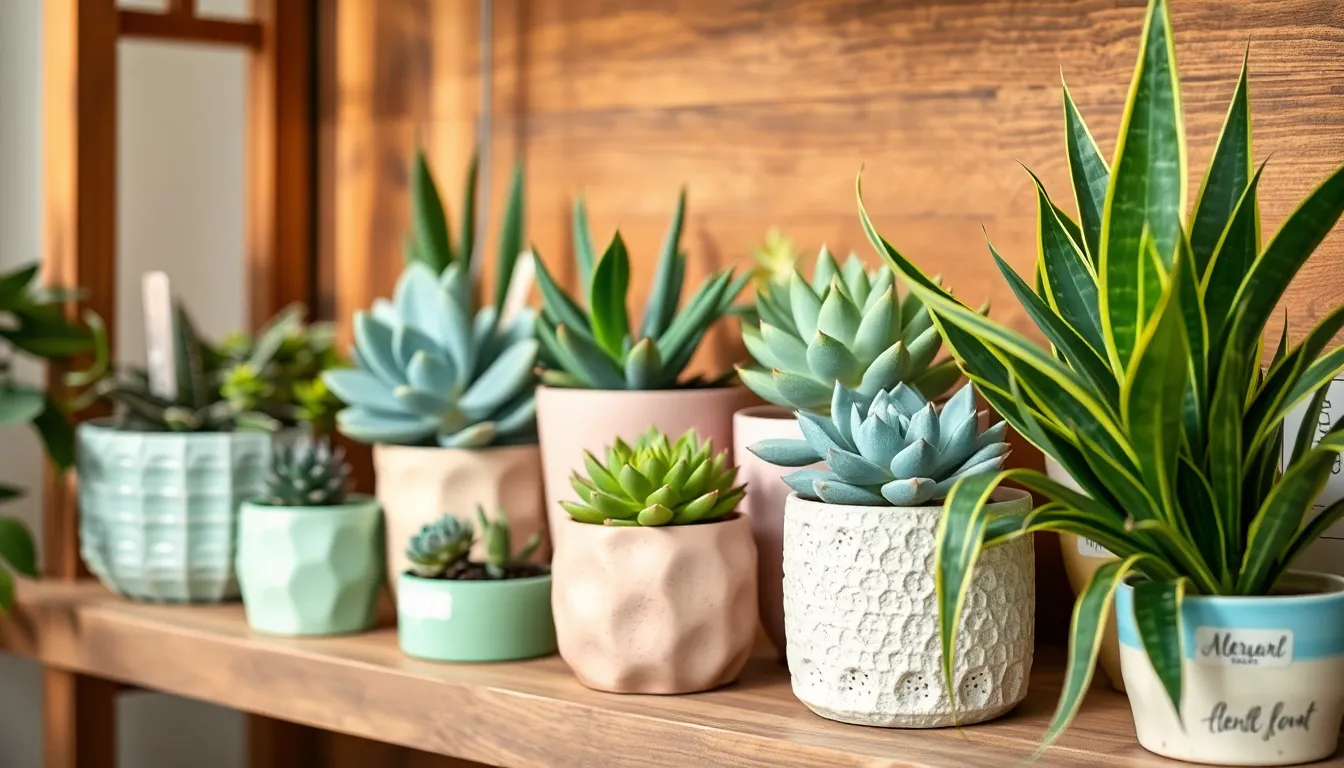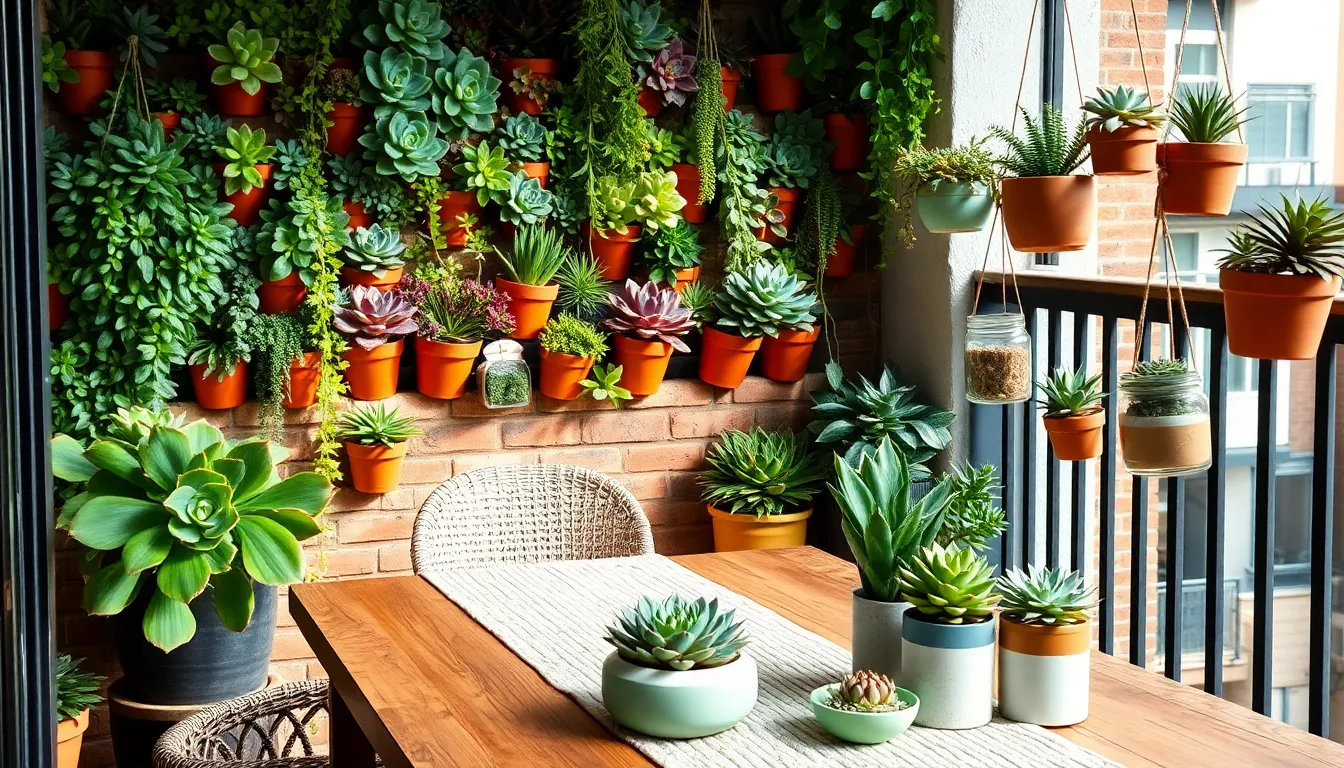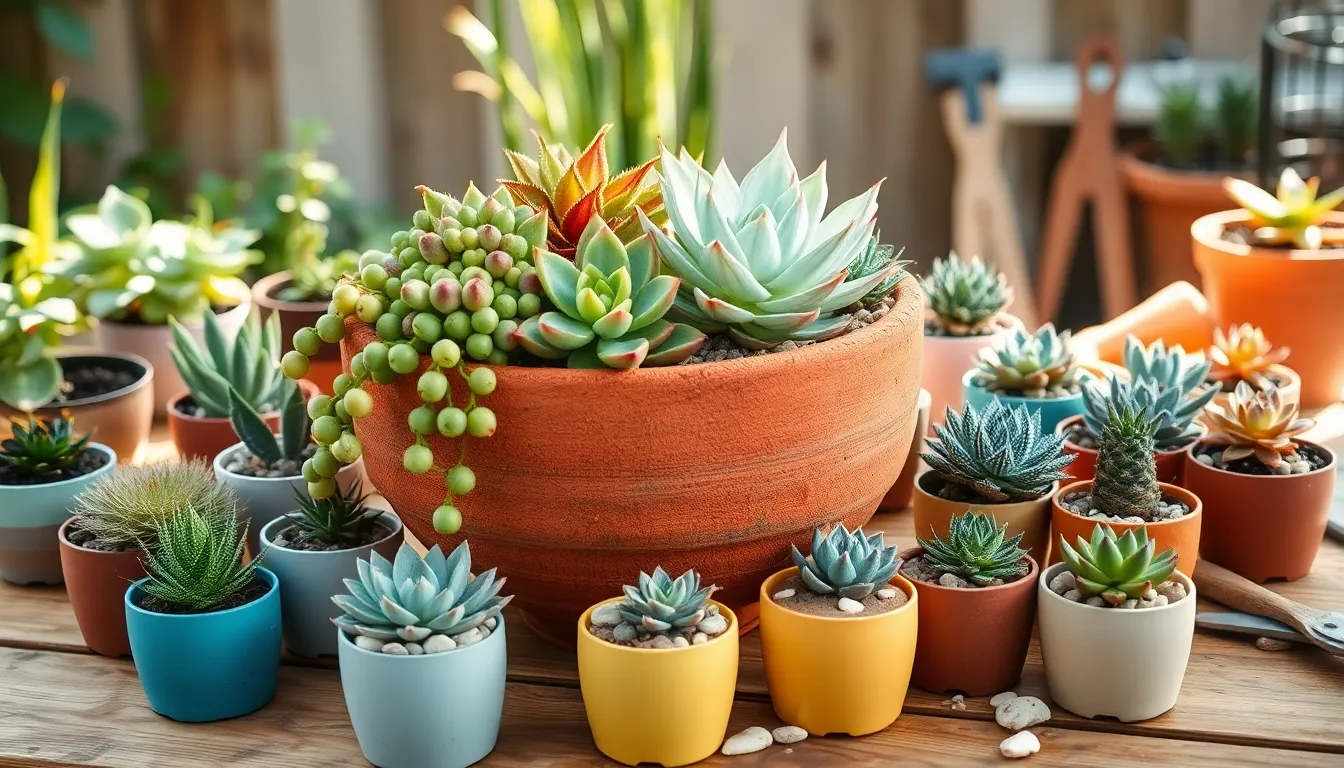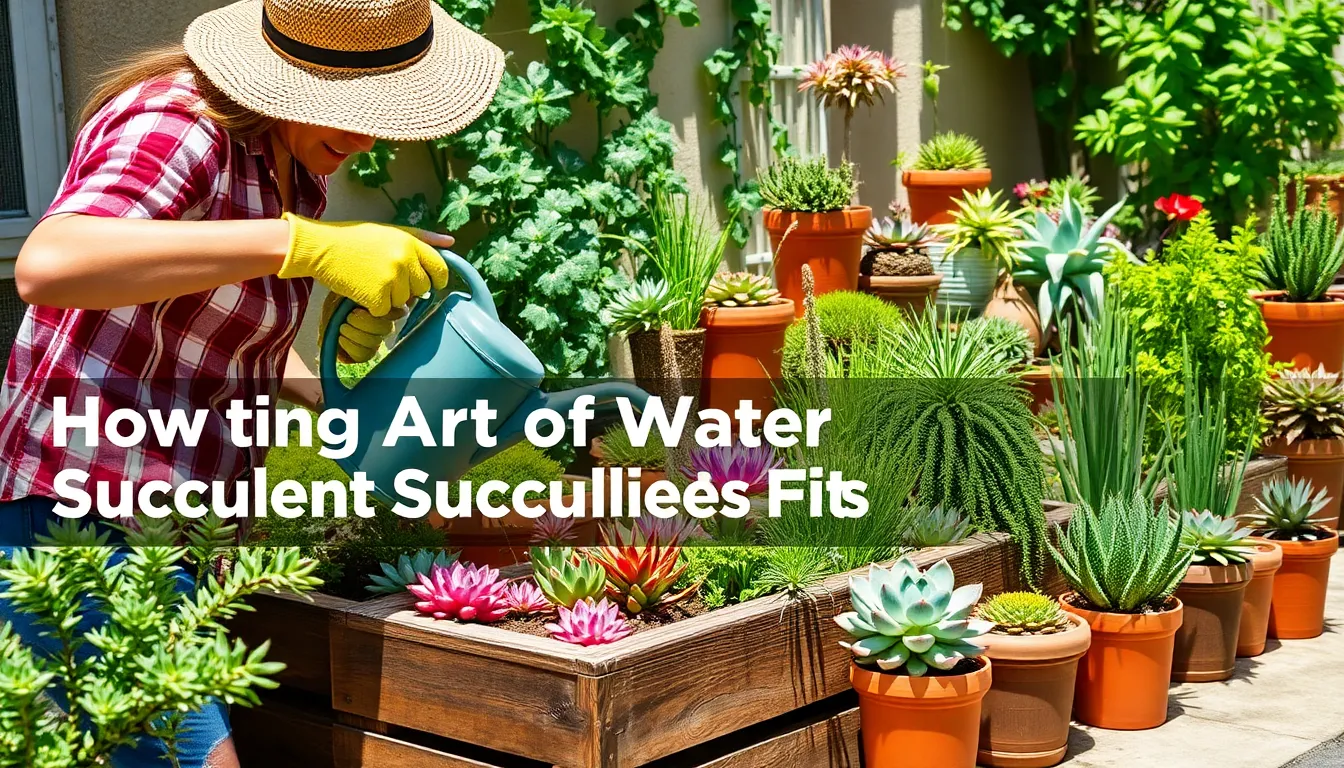Whether you’re just getting your hands dirty for the first time or you’ve been nurturing plants for years, the world of succulents offers a delightful mix of beauty and resilience. For those who might not have the luxury of abundant sunlight, discovering the best succulents for low-light conditions can be a game-changer, turning any dim corner into a thriving oasis.
This guide is your ticket to mastering the art of succulent care in less-than-ideal lighting, bringing life and greenery into spaces you might have thought were off-limits. With our carefully curated list, you’ll find the perfect plants that not only survive but thrive with minimal light, unlocking the secret to a lush indoor landscape that even seasoned gardeners will envy.
Dive in and feel empowered, knowing that these hardy plants are ready to reward your efforts with their striking forms and colors. You’ll gain practical tips and insights that ensure your succulent journey is not just successful, but also deeply satisfying and enriching, making every new leaf a testament to your growing green thumb.
Snake Plant ‘Bantel’s Sensation’ (Sansevieria trifasciata)
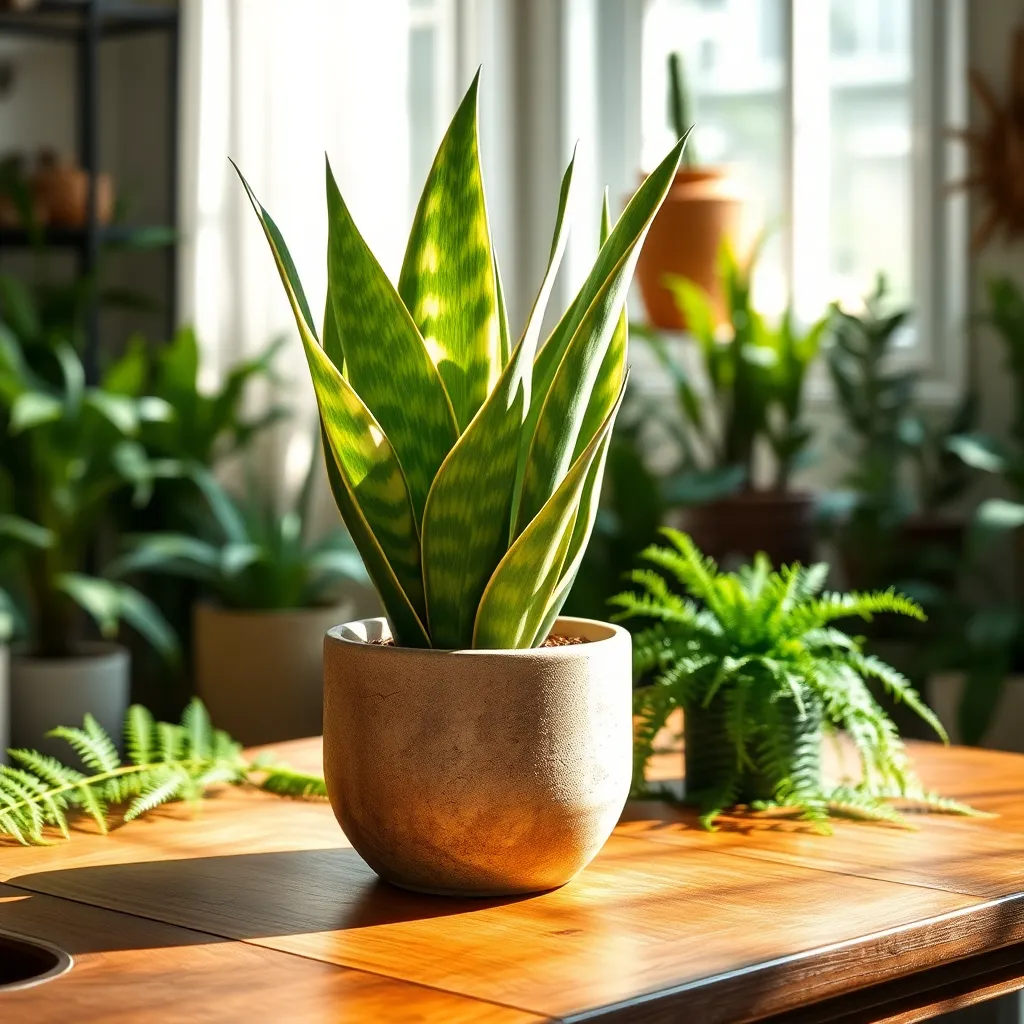
The Snake Plant ‘Bantel’s Sensation’ is a striking variety of Sansevieria trifasciata, known for its tall, narrow, and variegated leaves. This succulent is a fantastic choice for beginners due to its low-maintenance nature and adaptability to low light conditions.
To ensure your Snake Plant thrives, select a pot with adequate drainage and use a well-draining soil mix, such as one designed for cacti and succulents. Water your plant sparingly, allowing the soil to dry out completely between waterings, typically every two to three weeks.
Although the plant does well in low light, it will grow more vigorously if exposed to indirect, bright light. For optimal growth, rotate the pot occasionally to provide even light exposure and maintain its upright form.
Advanced gardeners can propagate ‘Bantel’s Sensation’ through leaf cuttings or by division. Simply cut a healthy leaf into sections or divide the root ball during repotting, ensuring each section has roots to establish new plants successfully.
Panda Plant (Kalanchoe tomentosa)
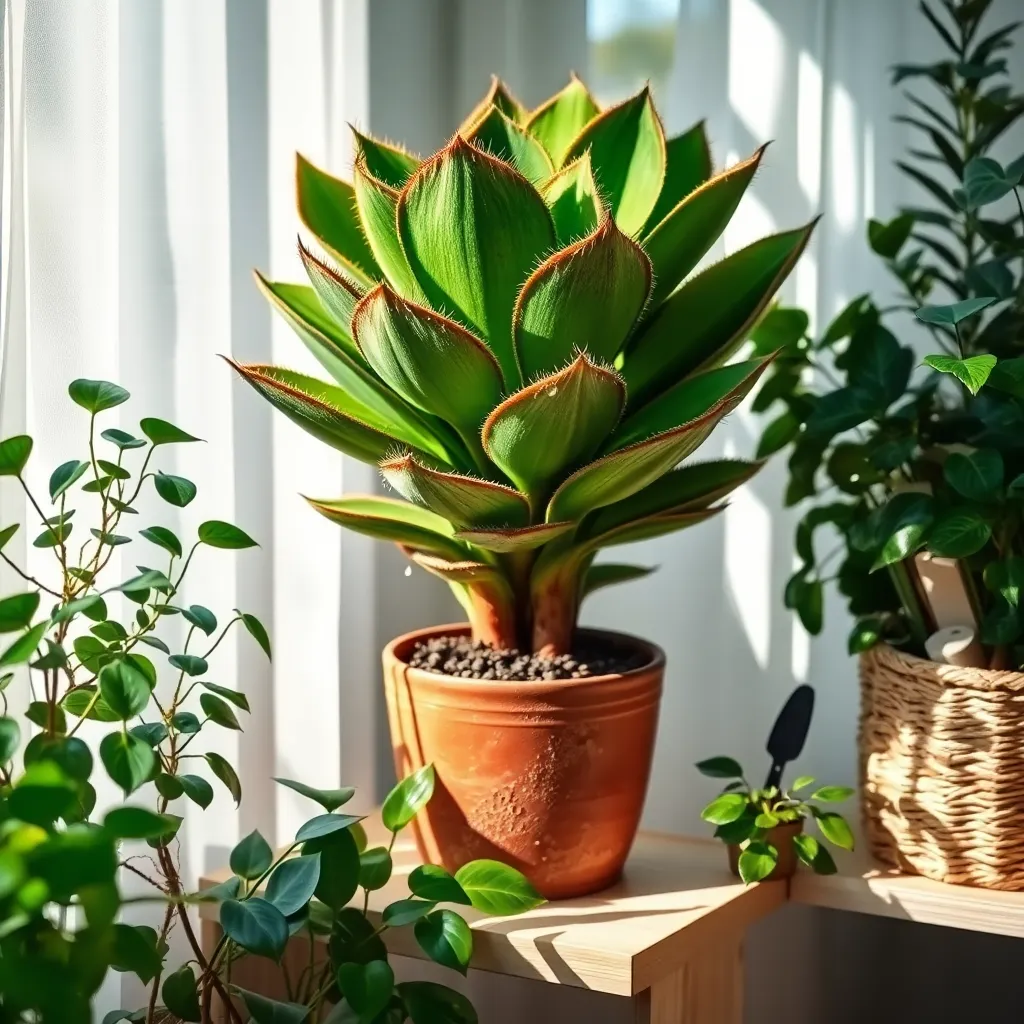
The Panda Plant (Kalanchoe tomentosa) is a delightful succulent that thrives even in low-light conditions, making it perfect for beginners. Known for its fuzzy leaves with brownish edges, this plant adds a charming touch to any indoor space.
To ensure your Panda Plant flourishes, place it in a spot with indirect sunlight or moderate shade. While it can tolerate low light, providing some bright, indirect light will help maintain its vibrant leaf coloration.
Watering is straightforward, as this succulent prefers a “soak and dry” method. Allow the soil to dry out completely between waterings to prevent root rot, which is a common issue with overwatering.
For optimal growth, use a well-draining cactus or succulent potting mix. Adding perlite or sand to regular potting soil can enhance drainage, which is crucial for Panda Plants.
Burro’s Tail (Sedum morganianum)
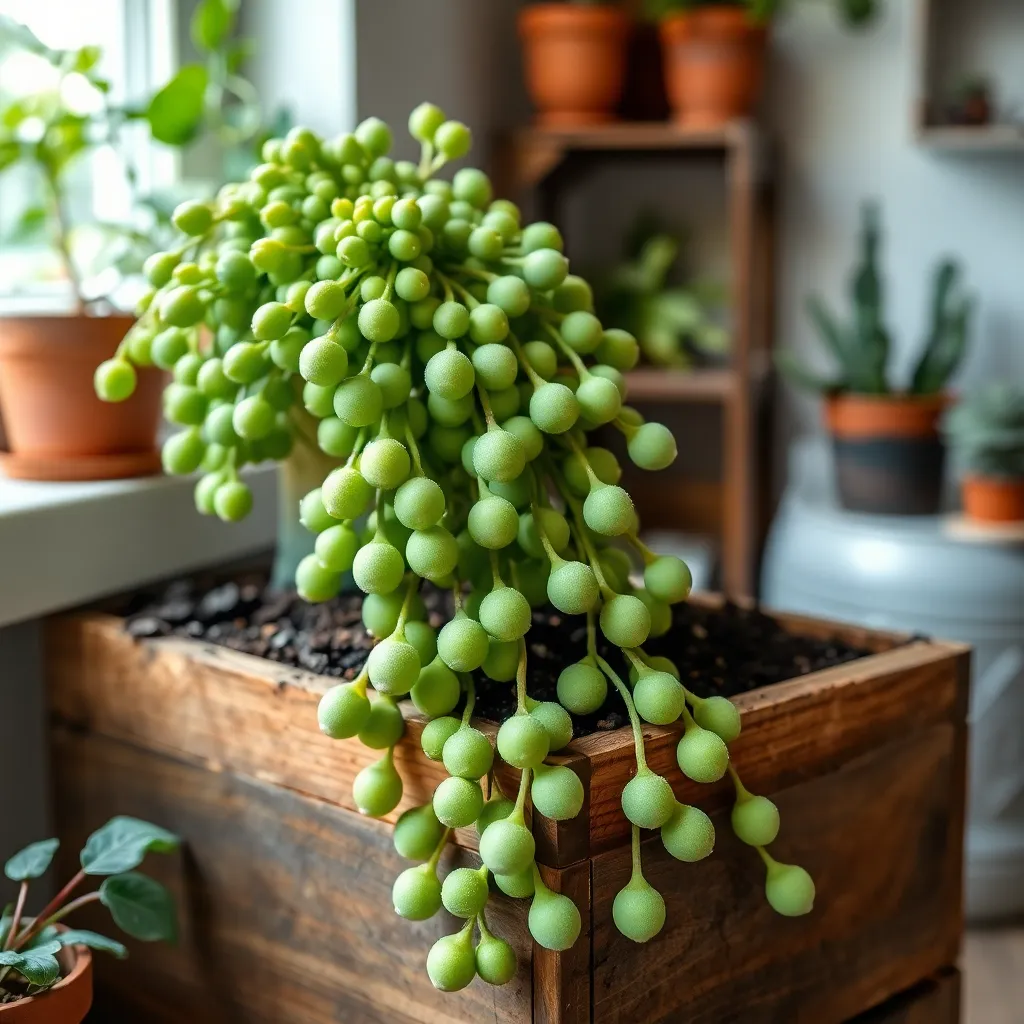
Burro’s Tail (Sedum morganianum) is an excellent choice for beginner gardeners seeking a low-maintenance succulent that thrives in low-light conditions. This trailing plant is perfect for hanging baskets or containers, where its plump, pale green leaves can cascade beautifully.
To ensure your Burro’s Tail flourishes, plant it in a well-draining soil mix, ideally one designed for succulents or cacti. You can create your own mix by combining equal parts of potting soil, coarse sand, and perlite to promote excellent drainage.
Avoid overwatering—the most common mistake with this succulent is providing too much water. Water only when the top inch of soil feels dry to the touch, typically every two to three weeks, adjusting frequency based on humidity and temperature.
While this plant can tolerate low light, providing it with indirect light will enhance its growth and color vibrancy. A position near a north or east-facing window is ideal to mimic its native habitat conditions, ensuring it receives the right balance of light and shade.
Gasteria ‘Little Warty’ (Gasteria bicolor var. liliputana)
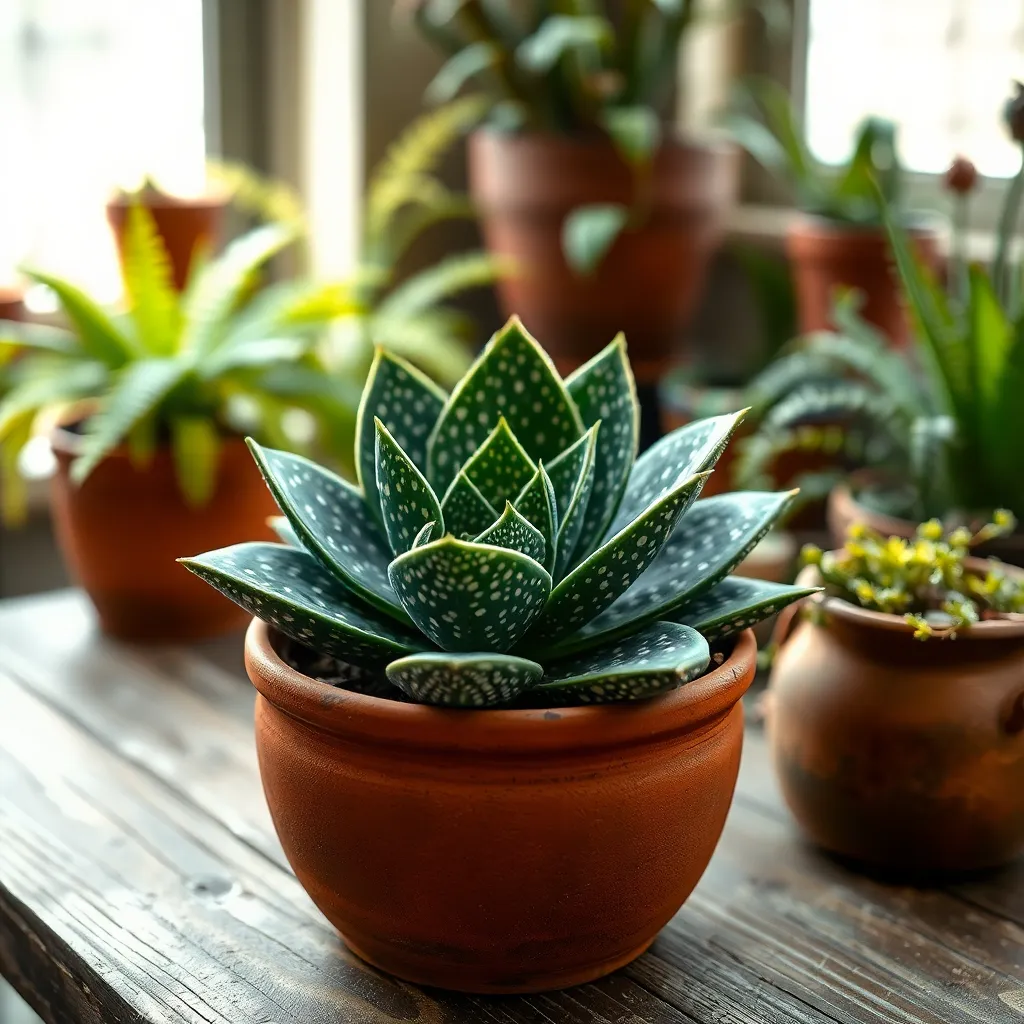
Gasteria ‘Little Warty’ (Gasteria bicolor var. liliputana) is a delightful succulent perfect for low-light conditions, making it an excellent choice for beginners. Its unique texture and compact size add visual interest to any indoor plant collection.
To thrive, Gasteria ‘Little Warty’ requires well-draining soil, such as a cactus mix or a blend of potting soil and perlite. This succulent is particularly drought-resistant, needing water only when the soil is completely dry.
Growing Gasteria ‘Little Warty’ is straightforward if you avoid overwatering, which can lead to root rot. It’s best to water deeply and infrequently, allowing the pot to drain completely and ensuring the soil dries out between waterings.
While this plant tolerates low light, it can also benefit from occasional indirect sunlight, which helps maintain its vibrant coloration. Rotate the plant every few weeks to ensure even growth and prevent it from leaning towards the light source.
String of Pearls (Senecio rowleyanus)
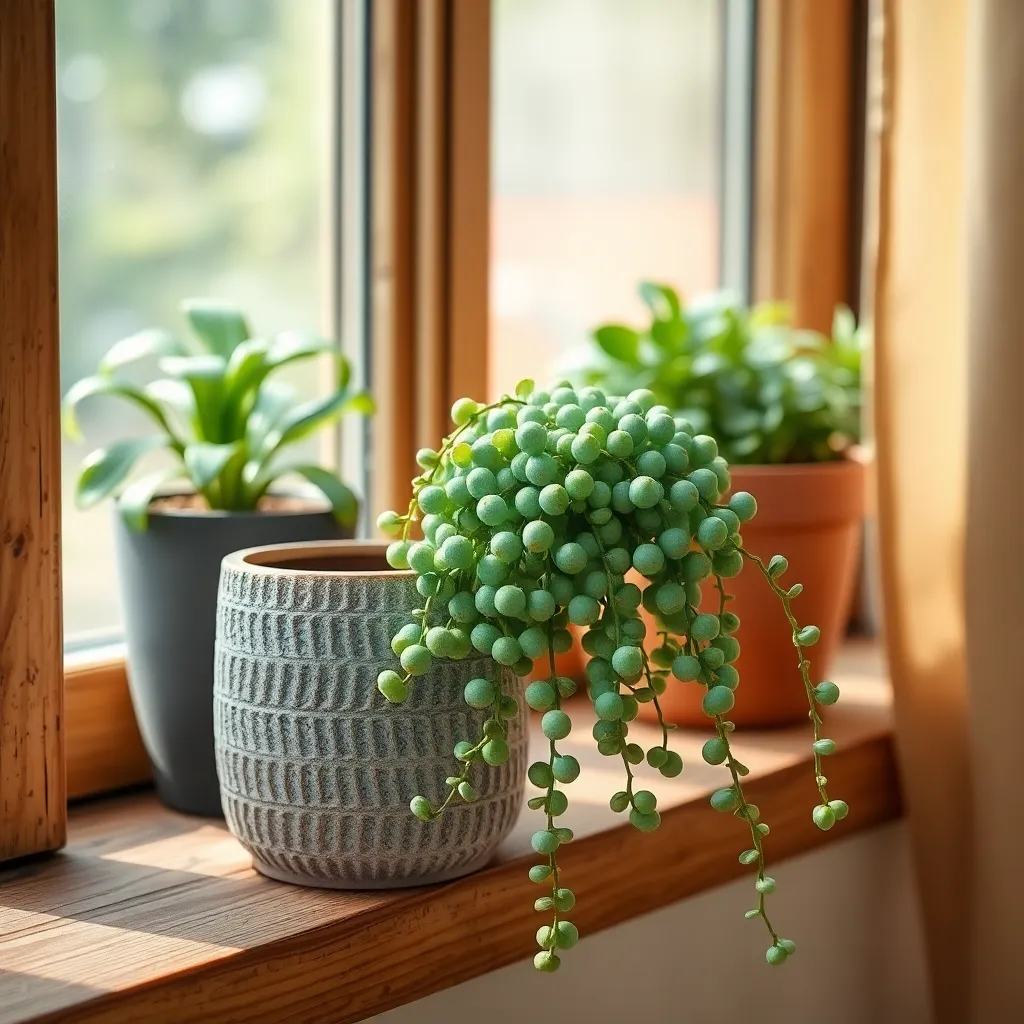
String of Pearls (Senecio rowleyanus) is a fascinating succulent that is perfect for beginners, especially those with limited light conditions. This unique plant features bead-like leaves that cascade beautifully, making it an excellent choice for hanging baskets or shelves.
To keep your String of Pearls thriving, place it in a location that receives bright, indirect light, although it can tolerate low light to some extent. If you notice the beads beginning to stretch, it may be a sign that the plant is searching for more sunlight, so consider moving it closer to a light source.
A well-draining soil mix is crucial for this plant’s health; consider using a cactus or succulent blend to avoid water retention. Ensure the pot has drainage holes, as standing water can lead to root rot, a common issue with succulents.
Watering should be done sparingly, allowing the soil to dry out completely between waterings. During the growing season in spring and summer, you might water every two weeks, while in the fall and winter, watering once a month may suffice.
For those looking to propagate their String of Pearls, it’s as simple as laying a cutting on top of the soil and lightly covering some of the beads. This plant readily roots from the nodes, making propagation a rewarding experience for even the newest of gardeners.
Conclusion: Growing Success with These Plants
In exploring the best succulents for beginners in low-light settings, we’ve uncovered five fundamental relationship principles. First, like succulents, relationships thrive when given the right balance of attention and space. Second, adaptability is key—both in finding the right plants and nurturing relationships through change. Third, patience is a virtue as growth, whether in love or greenery, takes time. Fourth, resilience is vital, as both succulents and relationships can endure challenging environments with care. Lastly, diversity in your succulent collection, much like in relationships, enriches your life with varied perspectives and experiences.
To take immediate action, consider starting a small indoor garden with a loved one, nurturing both your plants and your bond. Save or bookmark this article to revisit these insights as you cultivate both your green thumb and relational connections. Remember, the journey to relationship success is ongoing, and like your new succulent garden, it requires nurturing and commitment. As you embrace these lessons, envision a future where your relationships flourish with the same vitality and resilience as your thriving succulents. Let this be the beginning of a rewarding journey in both love and growth.

